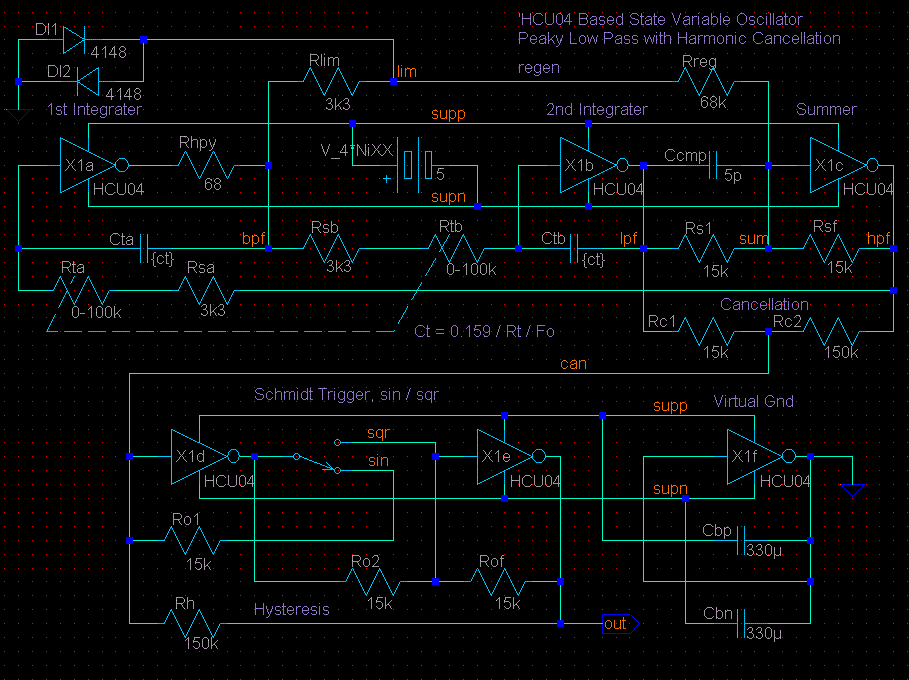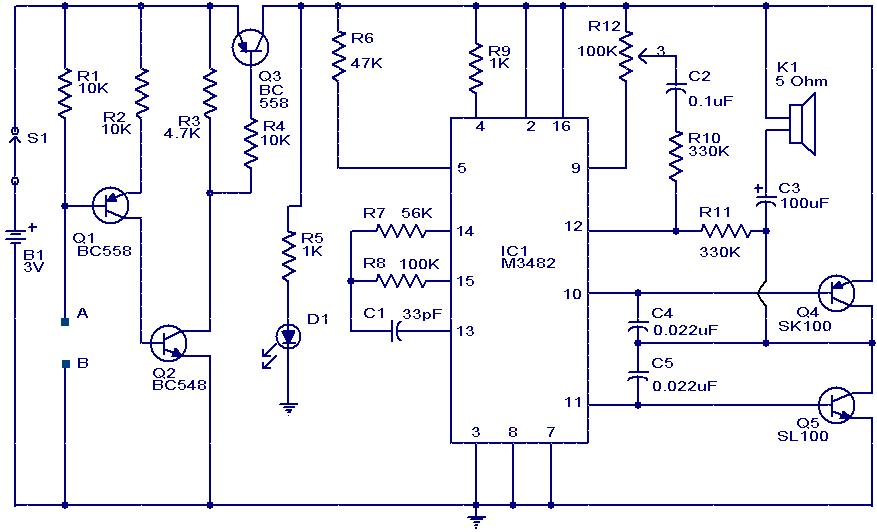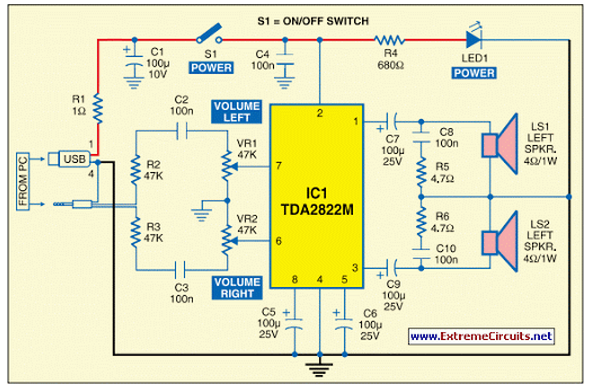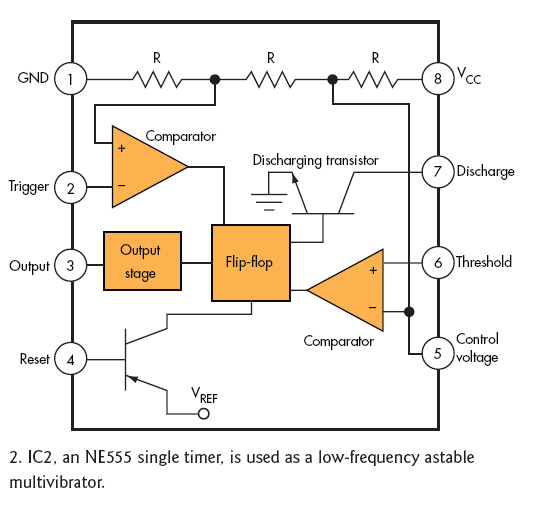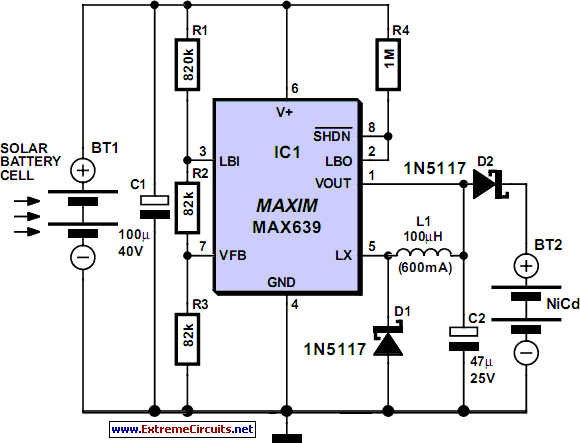
SIREN ALARM SIMULATES STAR TREK RED ALERT
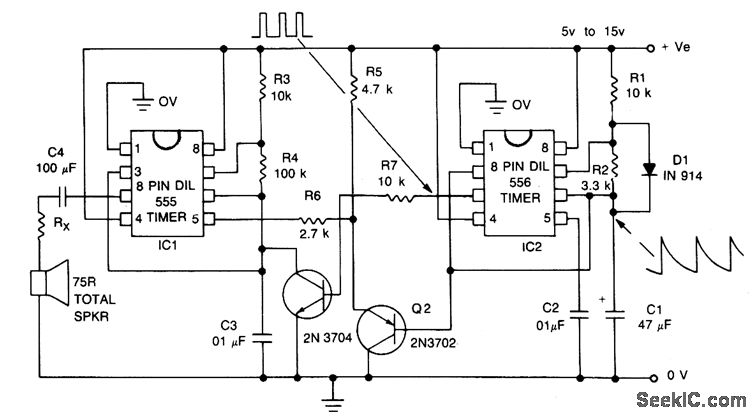
The signal begins at a low frequency, increases over approximately 1.15 seconds to a high frequency, pauses for about 0.35 seconds, and then starts to rise again from a low frequency, continuing this pattern indefinitely.
The described signal exhibits a repetitive waveform characterized by a low-to-high frequency transition. The rising edge of the signal occurs over a defined duration of 1.15 seconds, indicating a linear or exponential increase in frequency, depending on the specific application requirements. The high-frequency plateau achieved at the peak of this transition is maintained momentarily before the signal enters a brief pause lasting approximately 0.35 seconds. This pause serves as a reset period before the cycle recommences, allowing for potential applications in pulse modulation or frequency-shift keying.
In a practical electronic circuit design, this type of signal can be generated using a combination of oscillators and timers. A function generator or a microcontroller programmed with a timer interrupt could be employed to create the desired frequency modulation. The oscillator would be responsible for producing a low-frequency signal, which can be modulated to rise to a high frequency using a controlled ramp function. The timing for the rise and pause can be accurately managed through digital signal processing techniques or analog timing circuits, ensuring precise control over the frequency transitions.
Furthermore, filtering may be required to smooth the transitions between frequency states, preventing abrupt changes that could introduce unwanted harmonics or noise into the signal. This can be achieved using low-pass filters designed to work at the expected frequency range. The implementation of this signal pattern could find applications in various fields, such as communication systems, signal processing, or audio modulation, where controlled frequency variations are essential for effective data transmission or sound synthesis.The signal starts at a low frequency, rises for about 1. 15 seconds to a high frequency, ceases for about 0. 35 seconds, then starts rising again from a low frequency, and so on ad infinitum. 🔗 External reference
The described signal exhibits a repetitive waveform characterized by a low-to-high frequency transition. The rising edge of the signal occurs over a defined duration of 1.15 seconds, indicating a linear or exponential increase in frequency, depending on the specific application requirements. The high-frequency plateau achieved at the peak of this transition is maintained momentarily before the signal enters a brief pause lasting approximately 0.35 seconds. This pause serves as a reset period before the cycle recommences, allowing for potential applications in pulse modulation or frequency-shift keying.
In a practical electronic circuit design, this type of signal can be generated using a combination of oscillators and timers. A function generator or a microcontroller programmed with a timer interrupt could be employed to create the desired frequency modulation. The oscillator would be responsible for producing a low-frequency signal, which can be modulated to rise to a high frequency using a controlled ramp function. The timing for the rise and pause can be accurately managed through digital signal processing techniques or analog timing circuits, ensuring precise control over the frequency transitions.
Furthermore, filtering may be required to smooth the transitions between frequency states, preventing abrupt changes that could introduce unwanted harmonics or noise into the signal. This can be achieved using low-pass filters designed to work at the expected frequency range. The implementation of this signal pattern could find applications in various fields, such as communication systems, signal processing, or audio modulation, where controlled frequency variations are essential for effective data transmission or sound synthesis.The signal starts at a low frequency, rises for about 1. 15 seconds to a high frequency, ceases for about 0. 35 seconds, then starts rising again from a low frequency, and so on ad infinitum. 🔗 External reference
